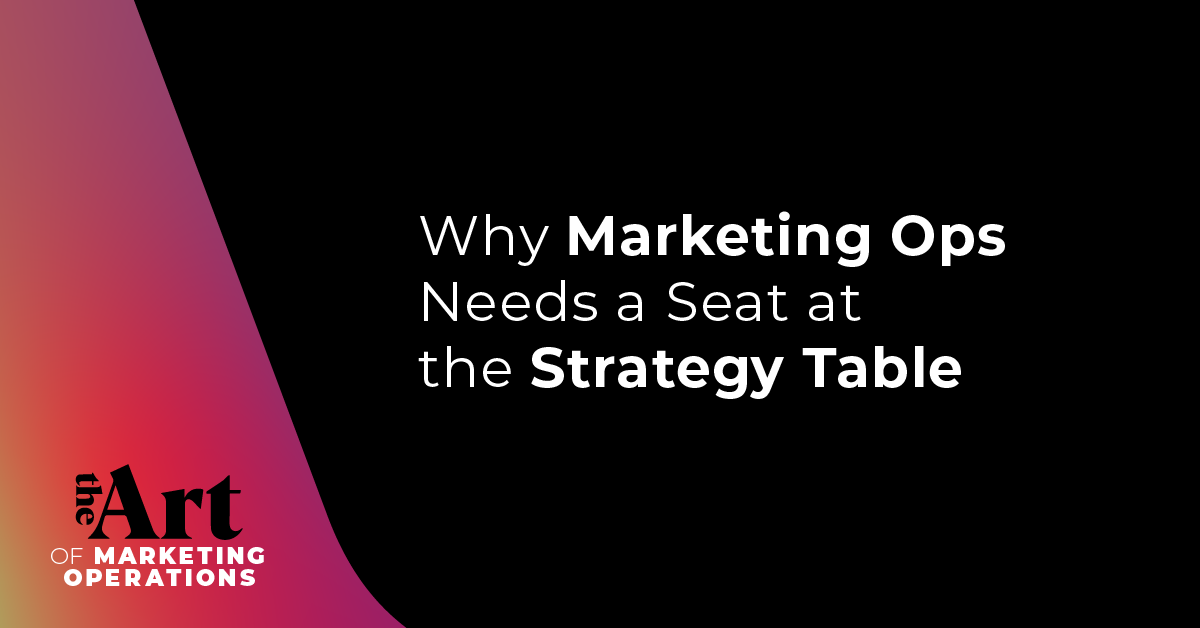Company mergers are a good time for taking stock of what works and what needs improvement.
But the path is not always smooth.
That’s why Jessica Meyers, Director of Marketing Operations and Technology at PatientPop, Inc, has worked to hone her ability to identify useful mistakes to help her with multiple facets of Martech.
In this insightful discussion with Jessica, we’ll explore:
- Why marketing mistakes may be painful (and often VERY public), but are necessary for progress
- How to balance Martech needs and wants realistically during a merger, with examples from her own recent experience
- How to create a seamless transition from marketing to sales
- The best marketing operations communities for learning
Learning from “Moops”
Jessica’s experience navigating PatientPop’s recent merger has left her thinking a lot about the value of mistakes.
It’s not that the merger was a mistake — far from it — it’s that, when you’re trying to get everyone from two disparate teams aligned and rowing in the same direction, mistakes are going to happen. But (hopefully) never a mistake you’ve made before.
The best part about merging two marketing teams is the added wisdom gained from more past marketing mistakes — or as Jessica refers to them in a recent video series, “Moops.”
Everyone makes mistakes but when marketers make mistakes, it’s particularly challenging because every mistake is oh-so-very painfully public.
“In the marketing space, mistakes can feel really visual and visceral because, if you send out an email with a broken link, 100,000 people get that email. But there's so much learning to be had from those mistakes and so much insight to be gained.” — Jessica Meyers
While worrying that 100,000+ people will see one of your mistakes in their inbox can add a lot of stress from the pressure to get things right the first time, there is a silver-lining — the public nature of such mistakes means most well-meaning marketers will never make the same mistake twice.
And in a complex merger, sharing those mistakes with others on your team means, ideally, that they’ll never make them in the first place.
Merging Martech
So, what exactly does Jessica find so challenging about the recent merger?
Above all, it’s getting the people and processes in sync.
“I knew our merger would present a challenge, but may not have been fully prepared for the complexity of aligning people and processes across the two orgs.” — Jessica Meyers
As Jessica tells it, the merger necessitates combing through every difference in the way each team operates — whether it’s something as minor as the internal nomenclature they use, or as big as the long-term roadmap — and figuring out the approach that best serves the new, larger team and the business. Sometimes, this means picking one approach; other times, it’s combining approaches.
And sometimes, it means finding a new approach entirely.
This is especially true when it comes to the combined team’s mess of a Martech stack. There are redundancies that require weighing the pros and cons and selecting one program to use. There are also new interactions — good and bad— when integrating the two stacks that need to be explored.
In certain cases, it’s as simple as deciding to get rid of some of the tech entirely.
Technology is meant to be there to help make processes more efficient and effective, but often, it only complicates things. If you can find an opportunity to take a step back from the day-to-day and recognize this, it’s yet another mistake you can learn and benefit from.
While the complexity of a merger can be difficult to untangle — just like suffering a very public “Moops” moment — it’s an opportunity to stop, reassess and learn from any missteps on the road that led you here.
The handoff
If you think merging two mostly-like-minded marketing teams is a challenge, think about what happens when you throw sales — and its notoriously precarious relationship with marketing — into the mix.
For Jessica, this added interdepartmental challenge means going back to first principles to identify the fundamental nature of the sales-marketing relationship — and not hoping some new-fangled tech will be the panacea that saves the day.
In short: Keep it simple.
In this case, that means homing in on the handoff.
“The root goal is to find and identify qualified potential customers and make sure that the sales team knows what they need to. If those core objectives aren't being met, it doesn't matter what piece of technology you layer on to the equation — it isn't going to solve the problem.” — Jessica Meyers
Among Jessica’s many valuable insights, one piece of advice for surviving a merger and laying the groundwork for future successes is perhaps the most salient:
Make sure the foundation is earthquake-proof before even thinking about layering on all the bells and whistles.
Learning communities
It’s great when you can learn from your own mistakes or the mistakes of others on your team — which is even better when that team grows. But you don’t have to go through a merger to learn from others.
The world contains so many more marketers — along with their near-infinite combined collection of Moops — that you can start learning from today. A good place to start is online learning communities hosted on Slack or Discord, where marketers gather to pool their knowledge.
Jessica’s advice for finding the most well-suited community for your needs echoes her previous advice: Keep it simple.
“The best community out there is the one that energizes you, where you find a sense of community and like-minded people who are happy to answer your question — and you want to answer theirs.” — Jessica Meyers
Sure, you can go for the community with the big-name attached to it or the one with the most users, but ultimately, you want to find the one that has the least friction between your problem and the solution.
So, try a few out and see what works for you — and just file the ones that don’t with the rest of your Moops collection.









.png)


